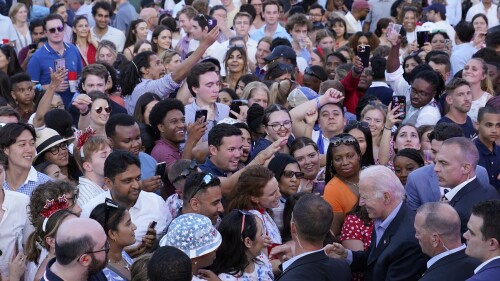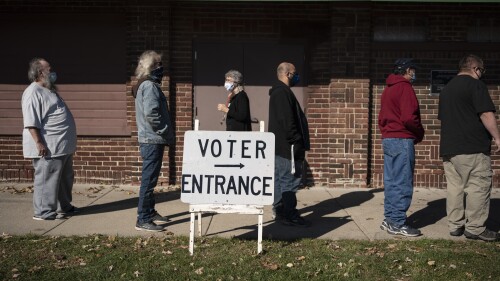
Published [hour]: [minute] [AMPM] [timezone], [monthFull] [day], [year]
CLAIM: A black-and-white photo of a young boy clutching a huge pick shows an 8-year-old coal miner from Utah or Colorado in the early 1900s.
AP’S ASSESSMENT: False. The photo, which belongs to the Helper’s Mining and Railroad Museum in Helper, Utah, was staged by the boy’s parents, the museum’s director told The Associated Press. Additionally, while 8 year olds did work cleaning coal at the time, they did not go underground with their fathers as actual miners until they were older, he said.
THE FACTS: The striking image has been circulating online with claims that it shows an actual child miner since at least 2007, when it was uploaded to Flickr.
Popular posts on Instagram, Twitter and the new social media platform Threads revived the photo — and the false claim about its subject — in recent days.
In the black-and-white picture, a young boy dressed as a miner holds a pick nearly as tall as he is in one hand, as a pipe hangs out of his mouth. His eyes are squinted in what appears to be a tough-looking expression.
An Instagram post that shared the picture had received more than 89,800 likes as of Friday.
Roman Vega, director of the Helper’s Mining and Railroad Museum said the image — which in real life is actually more of a sepia tone — was indeed taken in Utah, probably in 1900 before a May 1 explosion at a nearby mine that killed approximately 200 workers.
However it doesn’t depict a real pint-sized mine worker, he said. Instead, it was staged by the boy’s parents.
“It was a prop picture that the parents put together,” he said. “I just think that the family just wanted to create this photo just for a keepsake.”
Vega also pointed out that the boy wouldn’t have been able to properly lift the pick he’s holding, given that it’s bigger than his hands.
It was common in the area for children to work in mines, he said. The mining companies did a lot of recruiting before and during World War I, encouraging people to immigrate to the U.S. to escape war, hunger and other hardships. As a result, all members of a family would end up working in the industry.
Boys would work in the mines from as young as 8, but not as miners. Instead, they picked impurities out of the coal, such as dirt or sharp pieces of slate, with their bare hands as it came by on a conveyor belt. These boys, who worked in dust-choked gloom, were called “boneys” — a local term for what was known as a breaker boy on the East Coast. Once they got older, they would work with their fathers underground.
But Vega said the boy in the photo, probably a Finnish immigrant, is believed to have been about 5 or 6, making him too young to have worked even as a boney. If he did eventually work in a mine, it likely would have been at the Winter Quarters Mine in Scofield, Utah, given the clothing he is wearing. His name is unknown.
Even though the boy was not really a miner, Vega explained that images like this helped lead to the creation of child labor laws.
“It got so many people upset on the East Coast that, you know, why are children working in mines?” he said.
___
This is part of AP’s effort to address widely shared misinformation, including work with outside companies and organizations to add factual context to misleading content that is circulating online. Learn more about fact-checking at AP.


